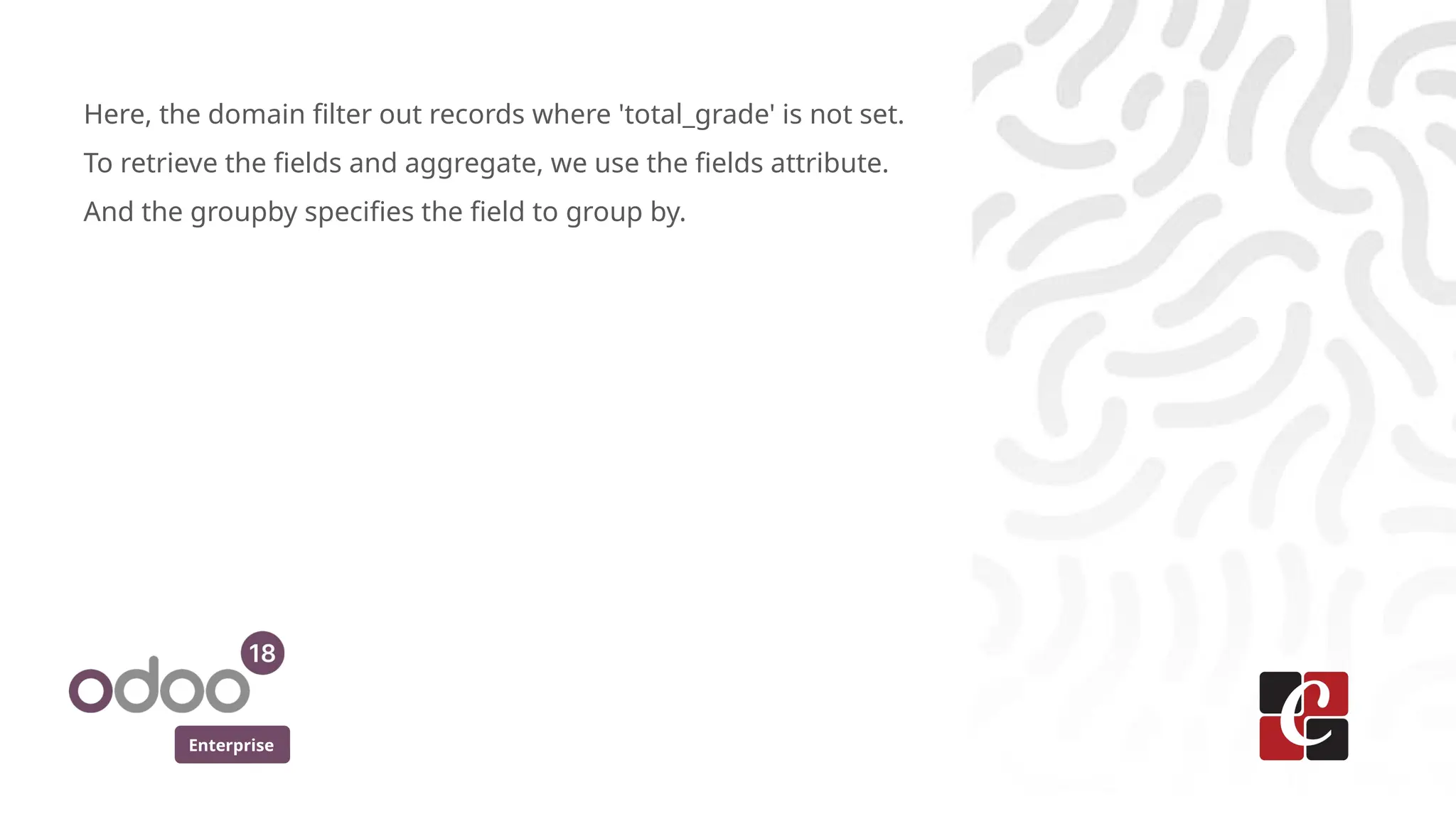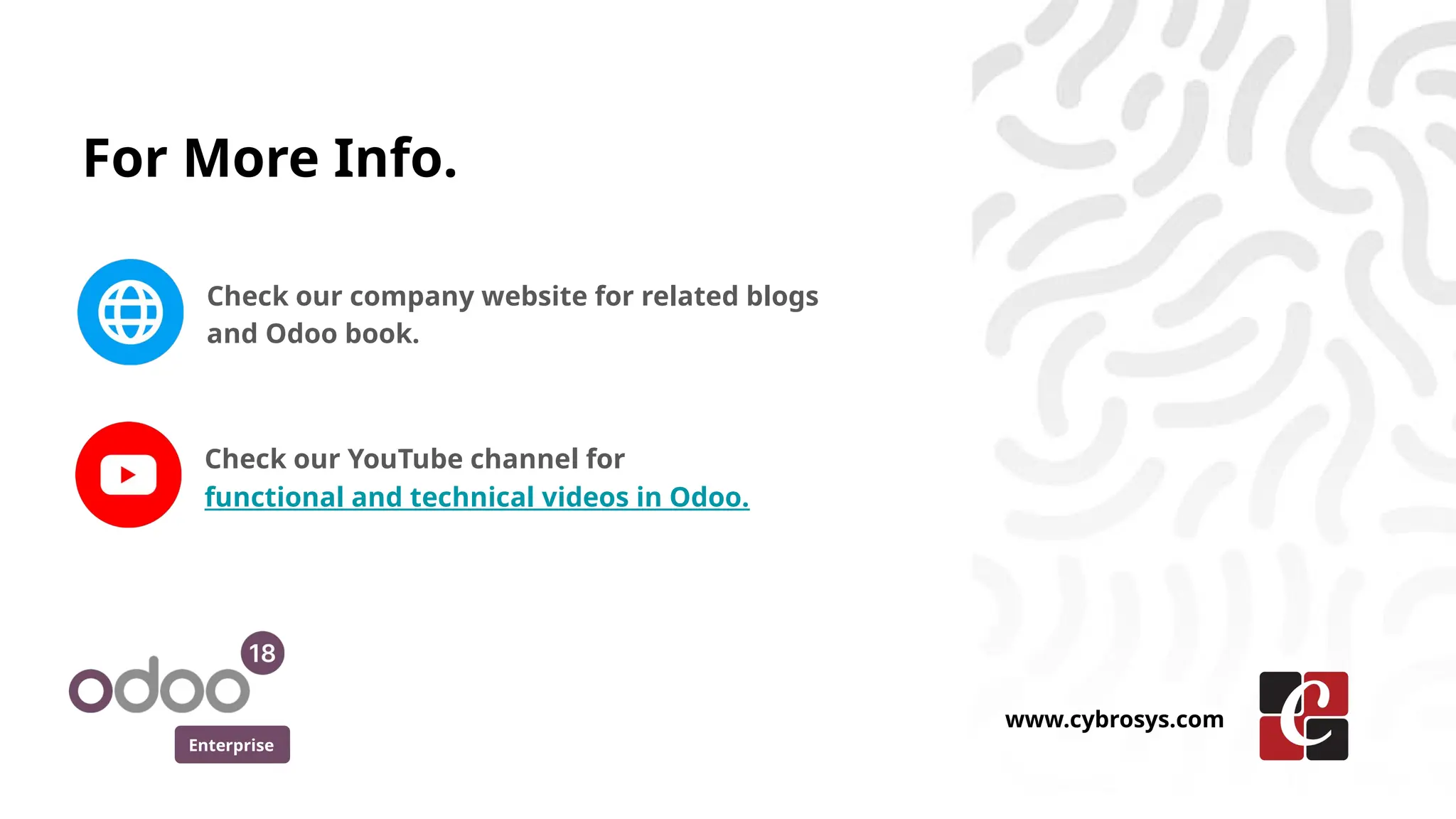The read_group() method in Odoo 18 is a highly performant ORM tool for performing SQL-like GROUP BY aggregations directly at the database level. It is the ideal method for generating grouped data for dashboards, reports, and statistical analysis, providing a significant performance boost over manual loops.
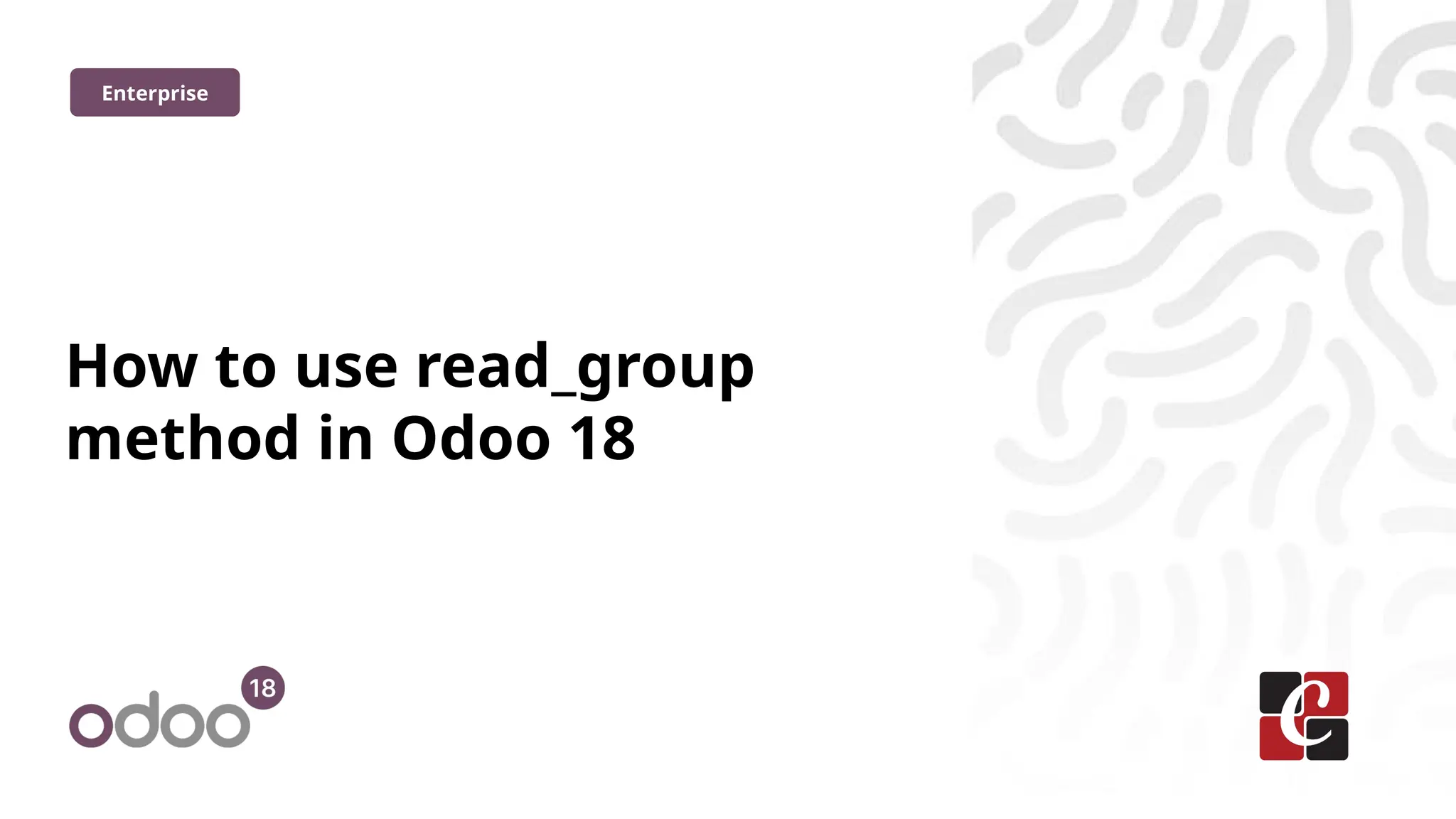
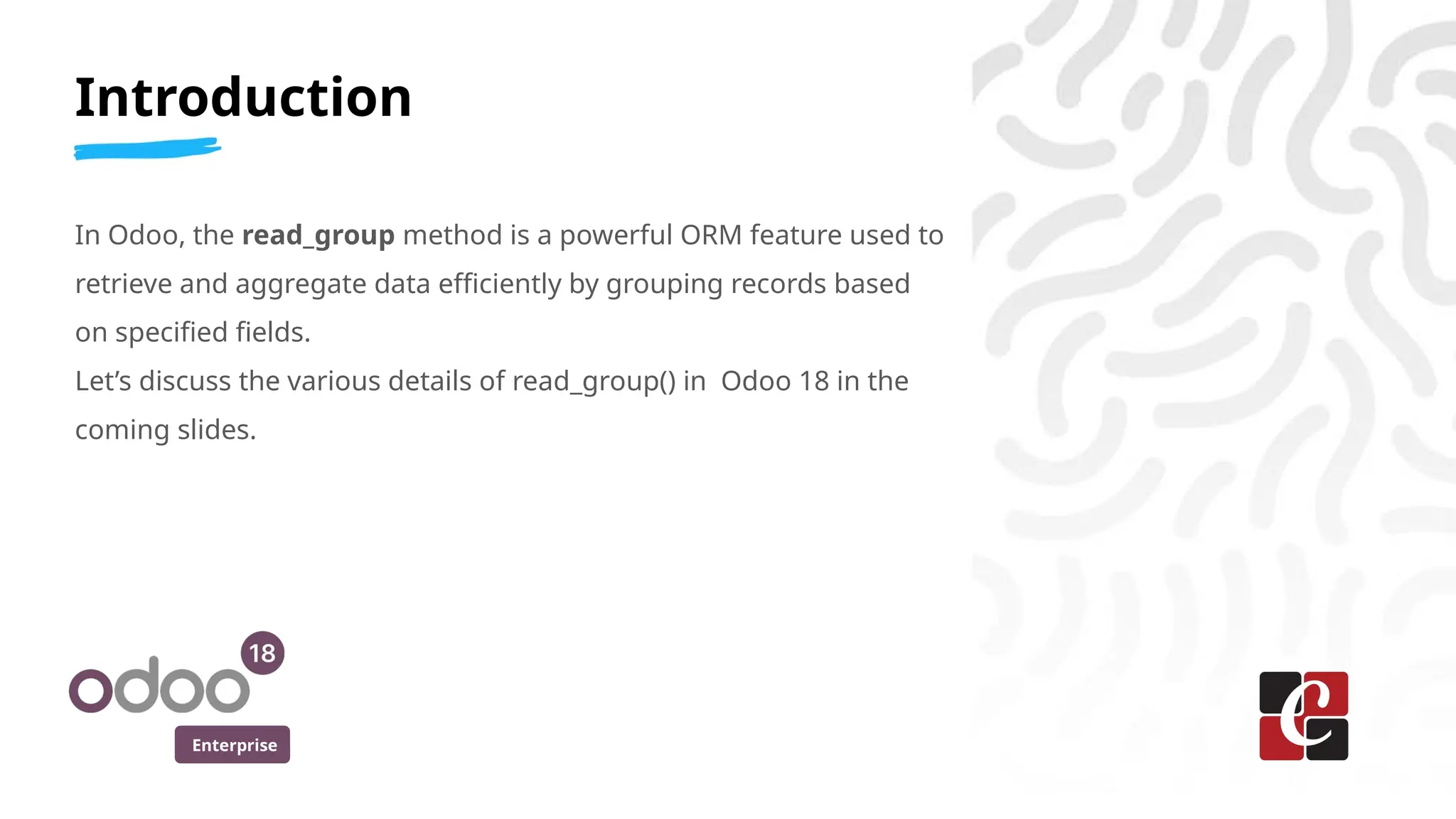
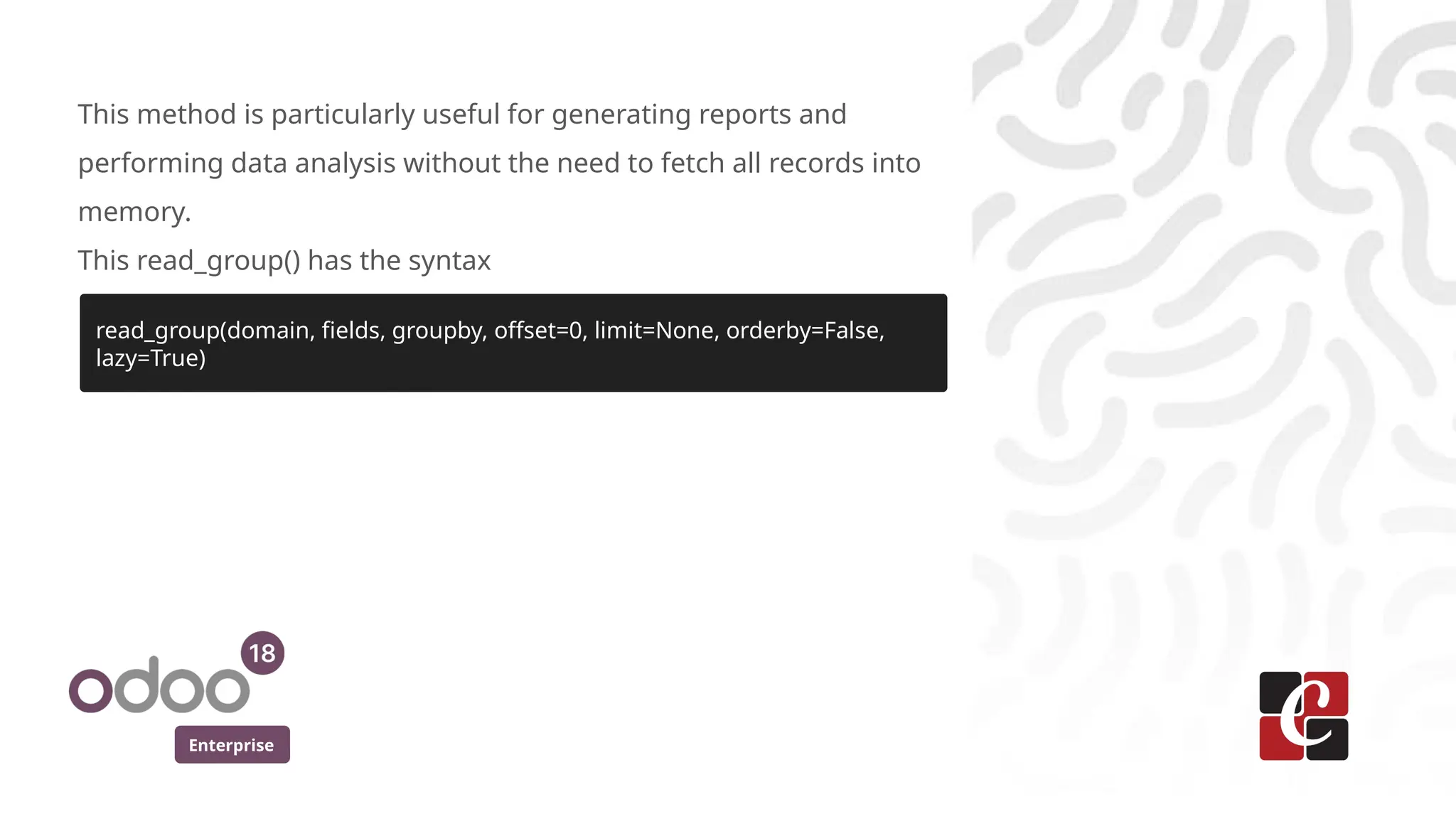
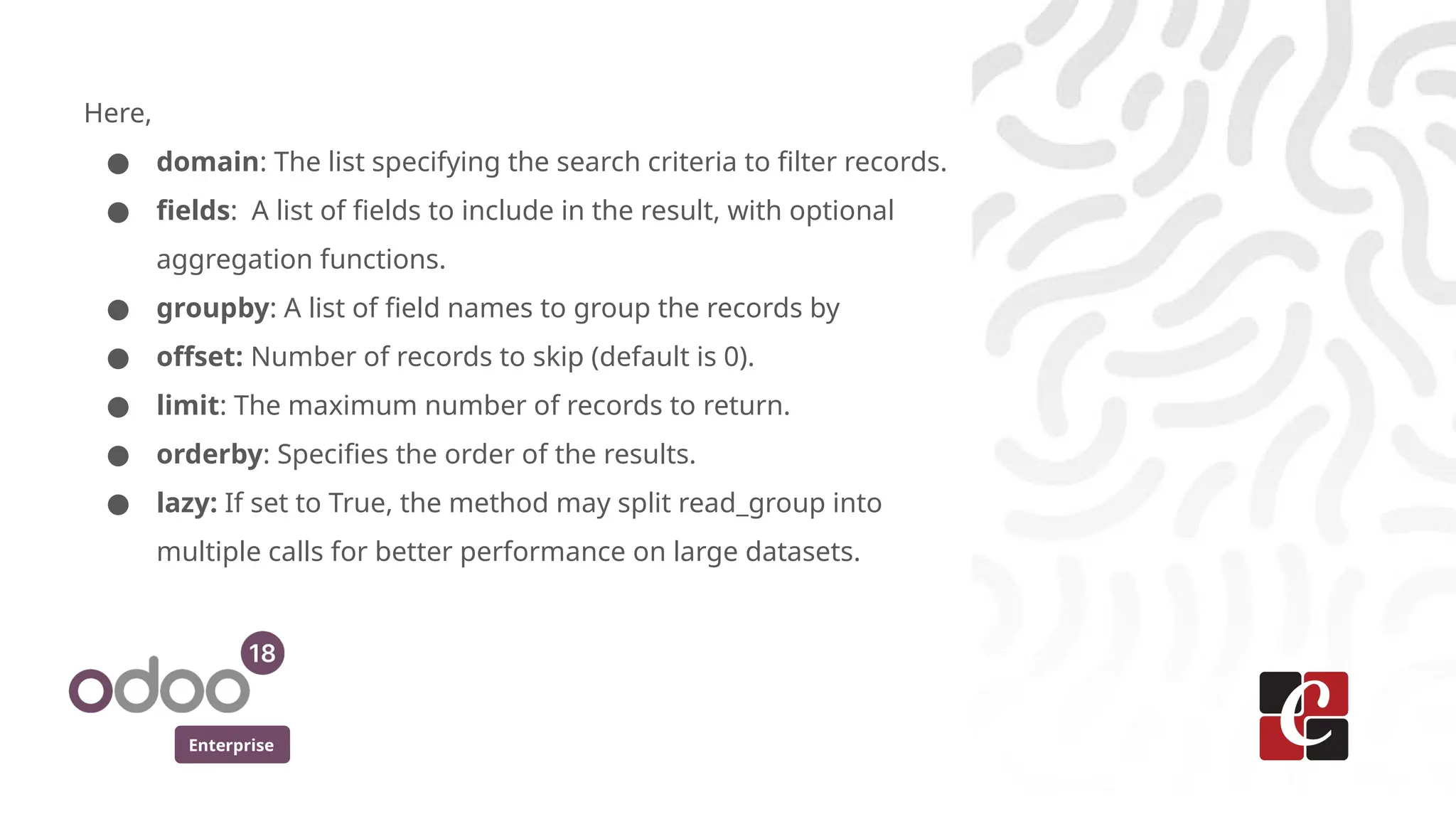
![Enterprise
Suppose we have a model student.student with fields name,
total_grade, and category_id. To calculate the average total_grade
for each category_id, we can use the read_group method as
follows:
grouped_result =
self.env['student.student'].read_group(
domain=[('total_grade', '!=', False)],
fields=['category_id', 'total_grade:avg'],
groupby=['category_id'] )](https://image.slidesharecdn.com/howtousereadgroupmethodinodoo18-250910044943-052d6dbe/75/How-to-use-read_group-method-in-Odoo-18-5-2048.jpg)
